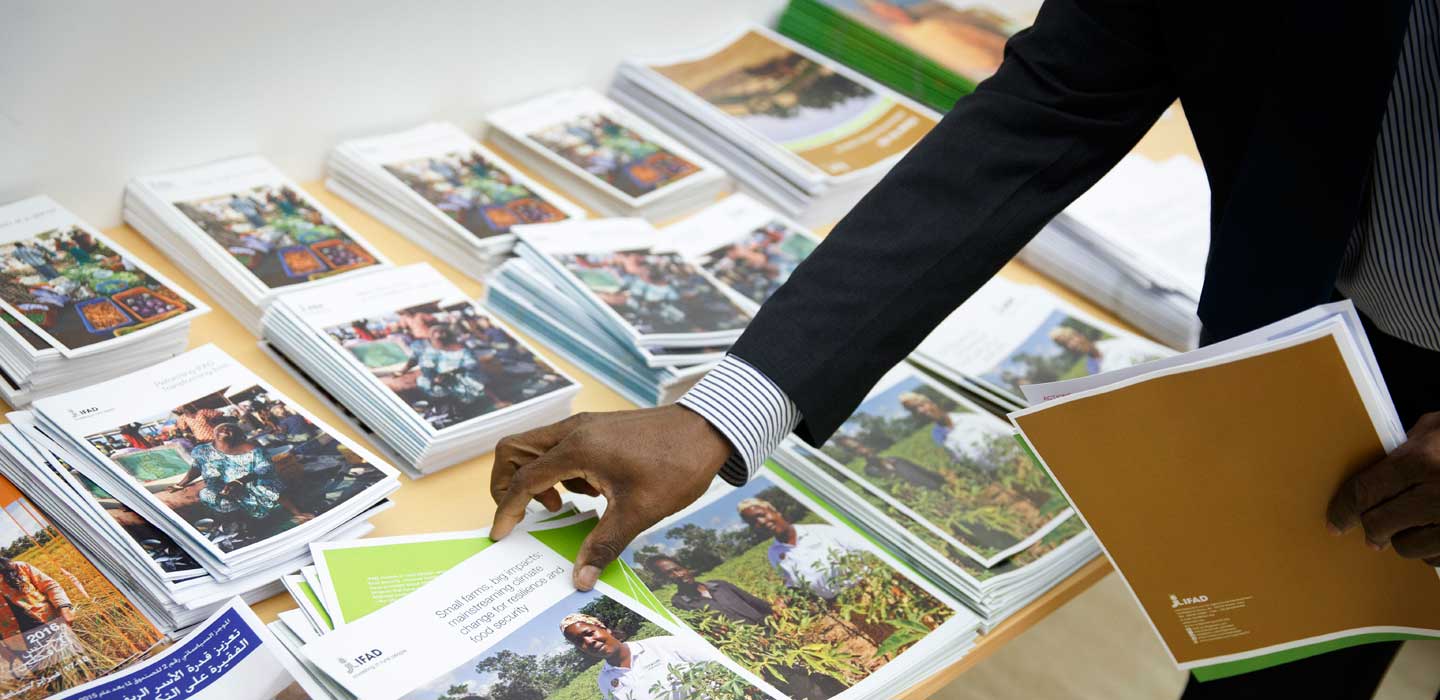Factsheets

صحف الحقائق
عرض القائمة
Search Results Filters
نتائج البحث
How the United Nations System Supports Ambitious Action on Climate Change
build carbon-neutral economies. This is why the UN system is fully committed to supporting the international community as it confronts climate change while working to build a sustainable world for the twenty-first century.
Gender equality and women's empowerment - IFAD's work and results
Lines of Credit
ASAP Bangladesh factsheet
change. During the monsoon period, the Haor region of Bangladesh becomes
completely inundated with 4-8 metres of water for around 6-7 months of the year.
Flash fl oods are common, and in some years 80-90 per cent of crops are lost
because of extreme weather events. The situation is expected to worsen as a climate
change-related shift towards pre-monsoon rainfall is coinciding with the paddy rice
pre-harvest period. This severely affects food output in the Haor, which provides up
to 16 per cent of national rice production.
ASAP Rwanda factsheet
production is increasingly exposed to drought, intense and erratic rainfall, high winds
and emerging seasonal and temperature shifts. If not addressed, climate variability
will mean signifi cant economic costs – estimated at up to US$300 million annually
by 2030.
ASAP Nigeria factsheet
ASAP Mali factsheet
ASAP Ghana factsheet
members of the selected value chains, will benefit from activities such as the dissemination of climate change adaptation toolkits, national and international exchange visits, the dissemination of good practices
and training.
ASAP Nicaragua factsheet
ASAP Kyrgyzstan factsheet
countries to the impacts of climate change in Central Asia. The country suffers from drought, land and mudslides. Flooding events and river erosion are set to increase in frequency and intensity. The mountainous nature of the country renders 45 per cent of Kyrgyzstan’s land inhospitable. The majority of the population live in valleys and at the foothills of the mountains, where vulnerability to climate-related hazards is highest.
ASAP Viet Nam factsheet
100 centimetres by the end of this century) are expected to affect 20-50 per cent of the low-lying Mekong Delta. Changes in rainfall and temperatures are increasing the risk of fl oods, typhoons and droughts. Climate change has serious implications for Viet Nam’s socio-economic development, especially in the densely populated and productive Mekong Delta.
ASAP Djibouti factsheet
The programme will support the design and implementation of participatory management plans for ecosystem conservation to alleviate stresses and increase the resilience of fragile habitats.
ASAP Yemen factsheet
rural communities. This includes increasing their resilience to climate change impacts by
helping communities to diversify their livelihoods options and improving the management
of natural resources. Investments in climate-resilient infrastructure will also support
agricultural development.
ASAP Bolivia factsheet
A market approach to drip irrigation
Between 2009 and 2012, the IFAD-supported Scaling up Micro-irrigation Systems (SCAMPIS) project developed a market approach for the dissemination of locally adapted drip irrigation kits.
The approach identifies the technology that is best suited to the local context and appropriate for the most vulnerable rural inhabitants. It then builds a sustainable local supply chain for the irrigation equipment that makes the technology affordable and available, not just for the duration of the project but in the long term.
In just three years, the pilot project was able to dramatically change the lives of 30,000 farmers and their families (in total, around 150,000 poor rural people) on three continents.
Family farming in Latin America - A new comparative analysis
Investing in rural people in Benin
Swaziland - Lower Usuthu smallholder irrigation project
Preparación jurídica para el cambio climático y el fomento al desarrollo rural en México
Enabling the rural poor to overcome poverty in Jordan
IFAD has committed US$71.4 million in loans to Jordan since 1981 to support agricultural development and reduce rural poverty. The funds have been used in six agricultural development programmes and projects with a total value of US$189.3 million.
The Government of Jordan and project participants have contributed US$63.2 million. The programmes and
projects are designed by IFAD in collaboration with rural people, the government and other partners. They address poverty through promotion of sustainable natural resource management, particularly water and soil conservation. A seventh project is being designed.